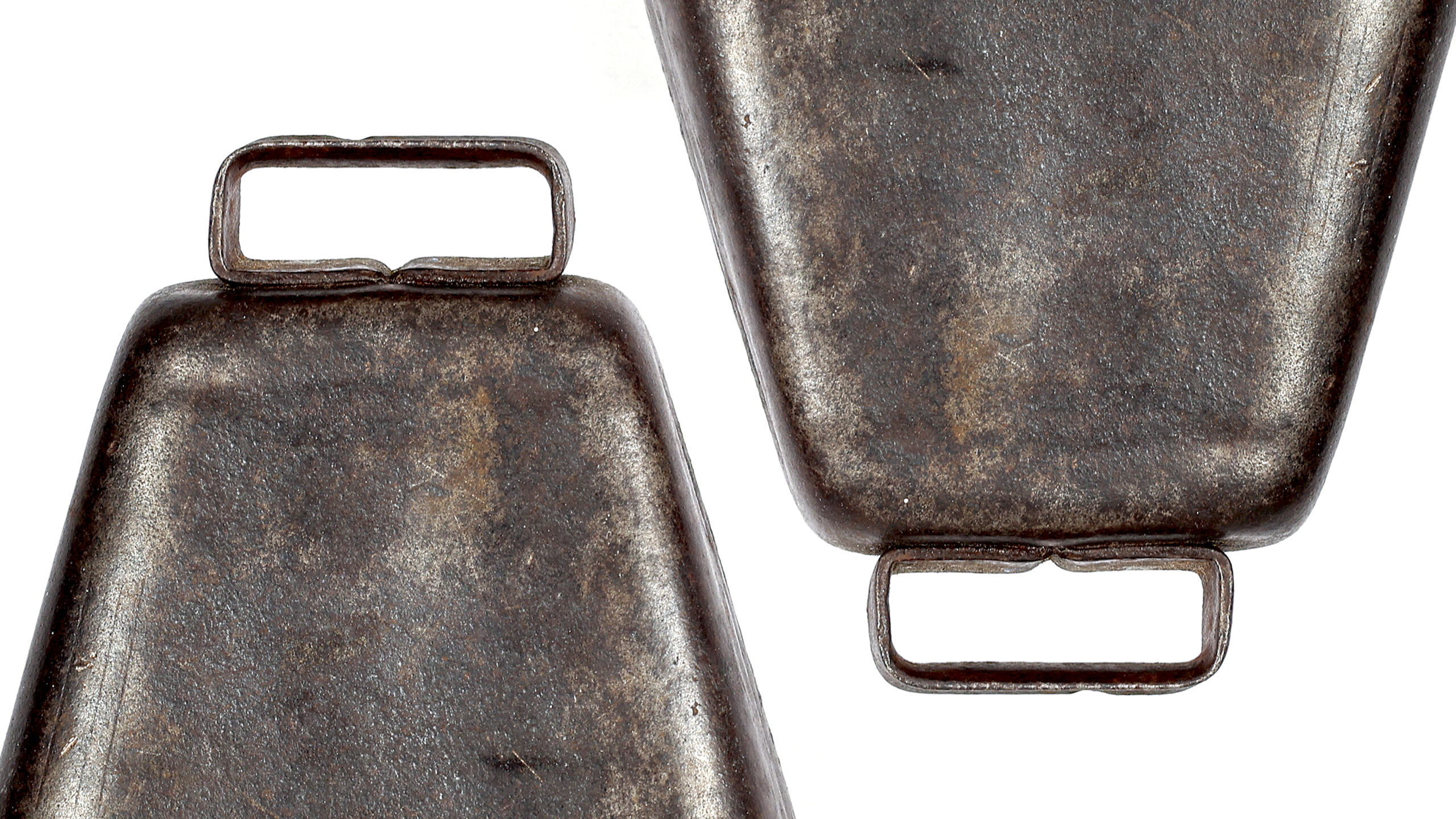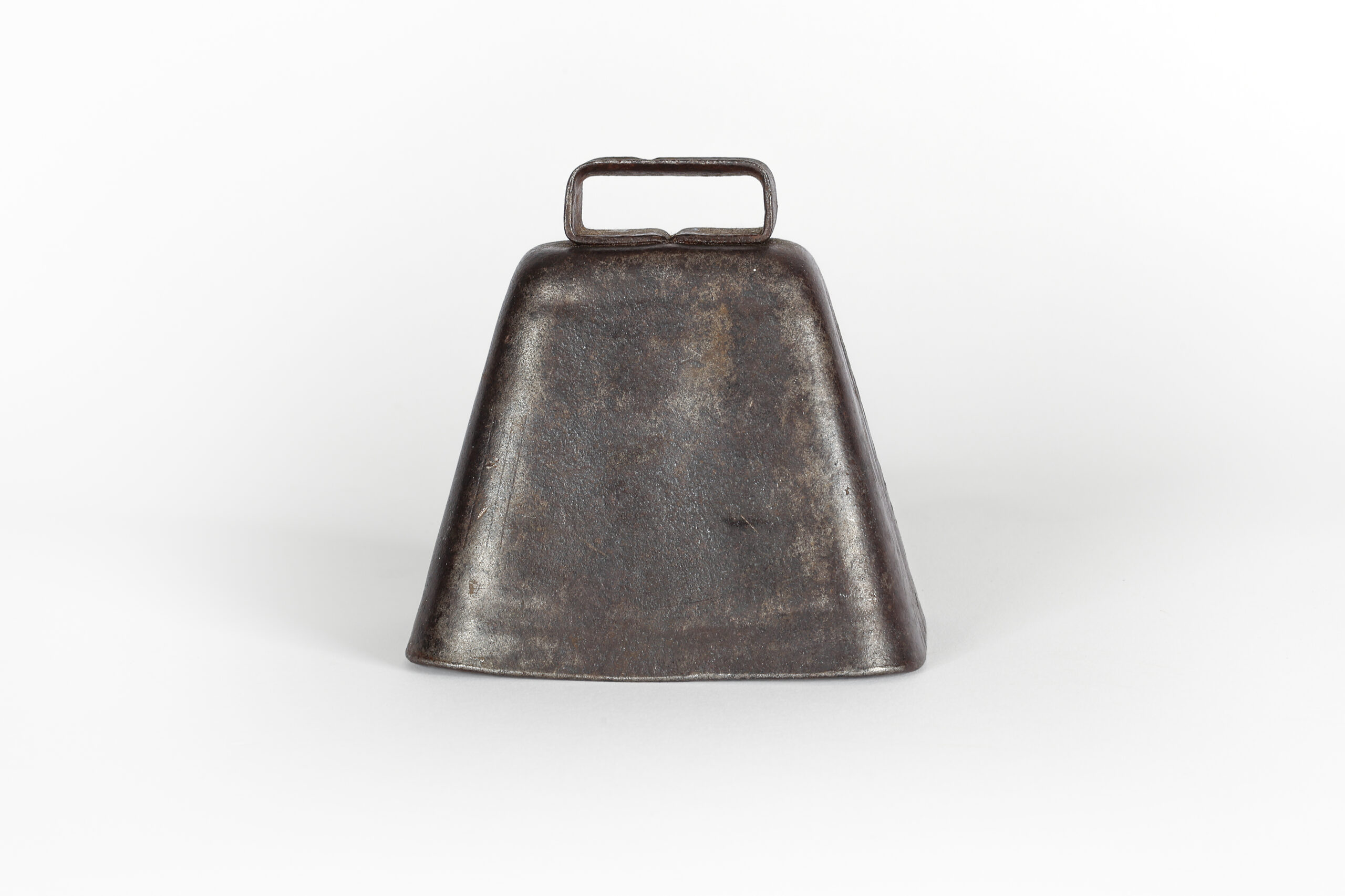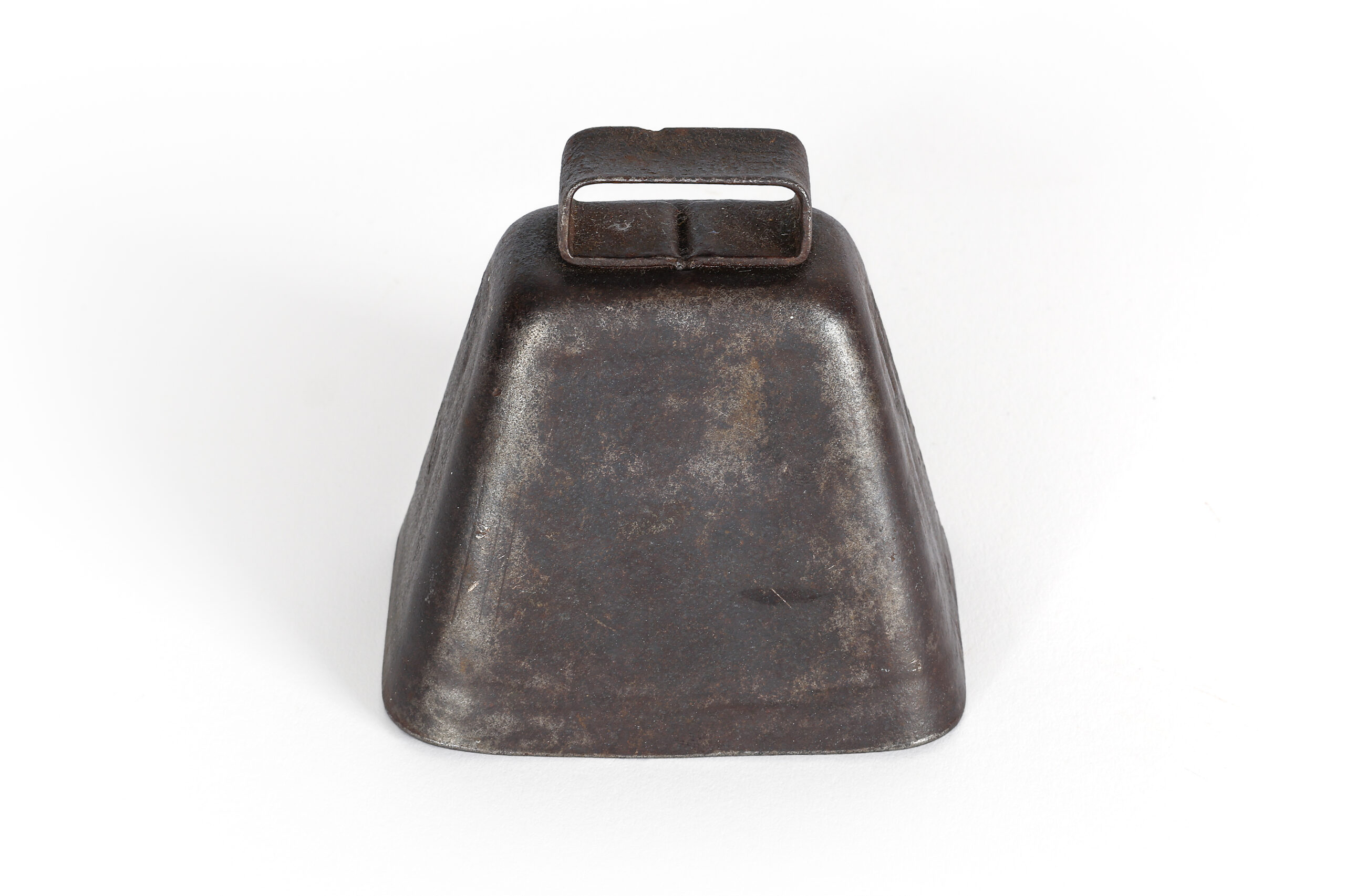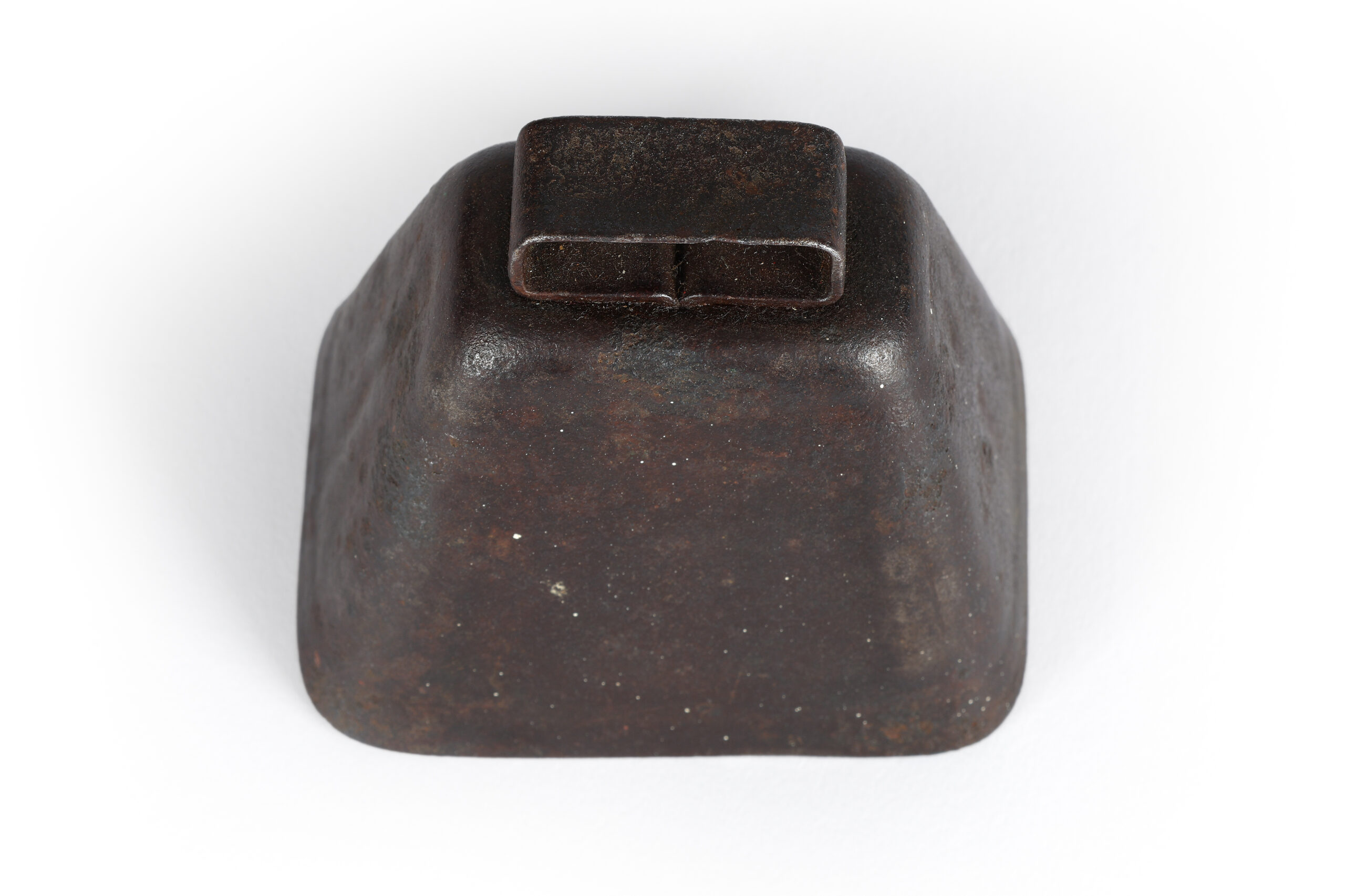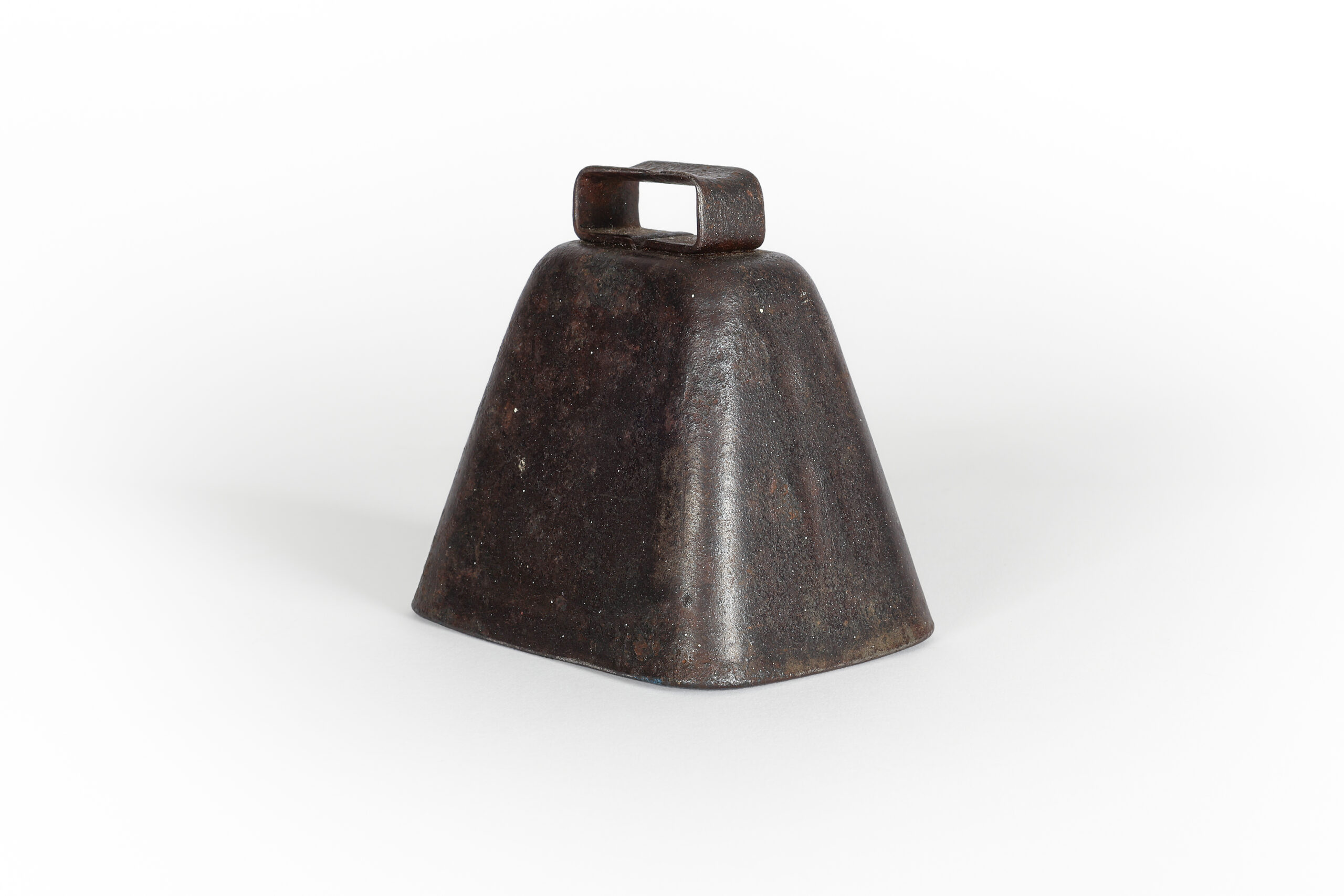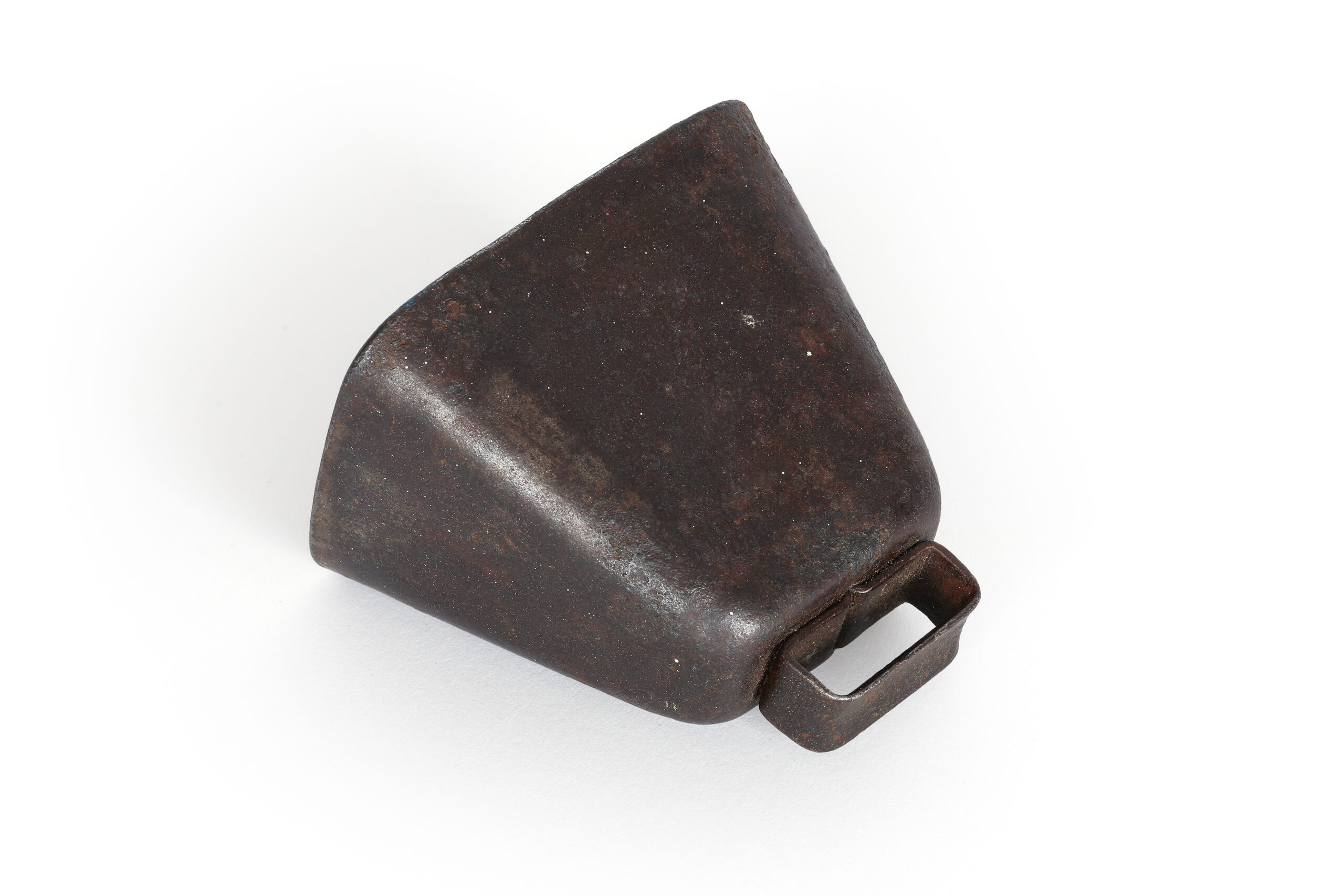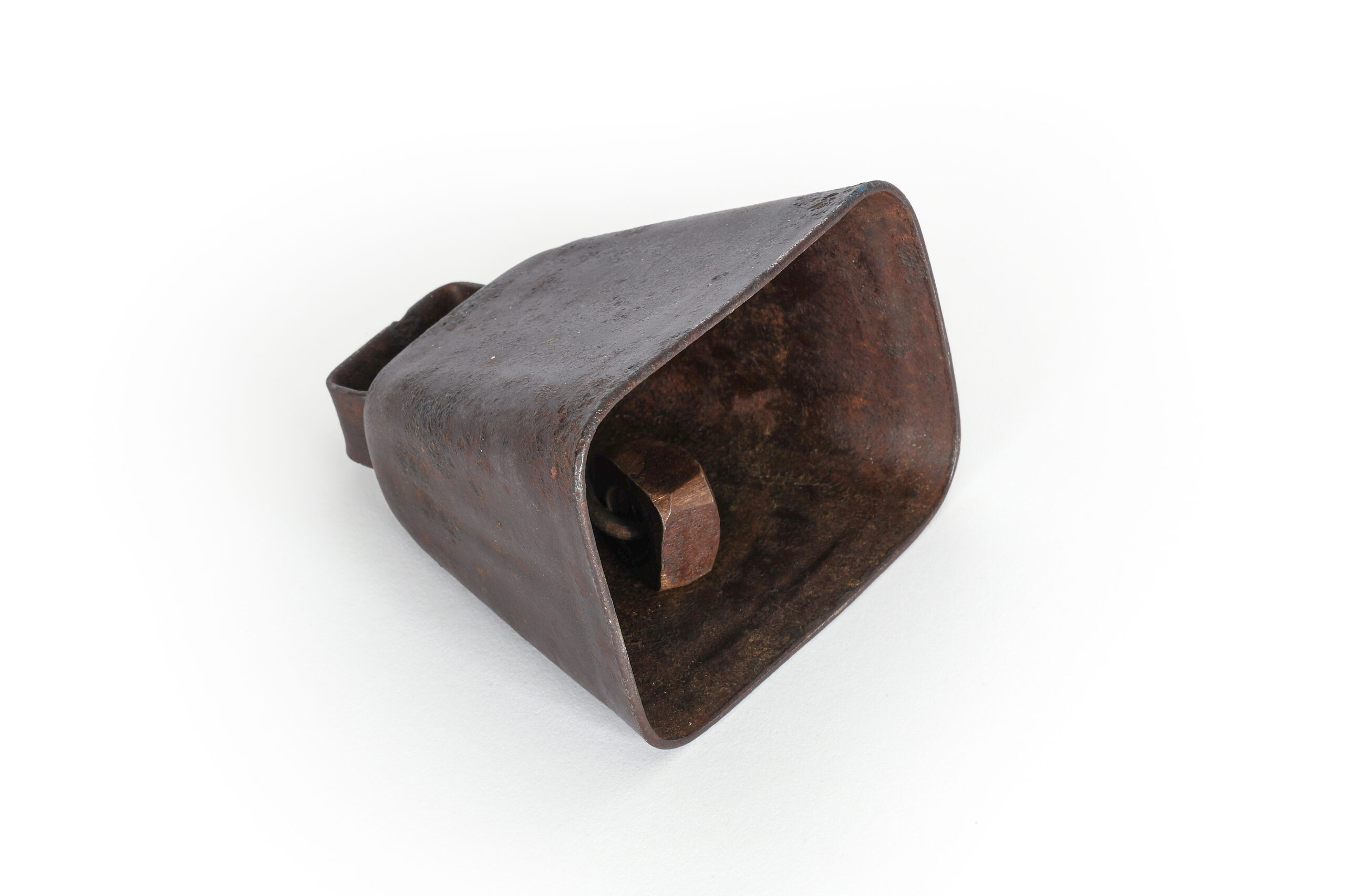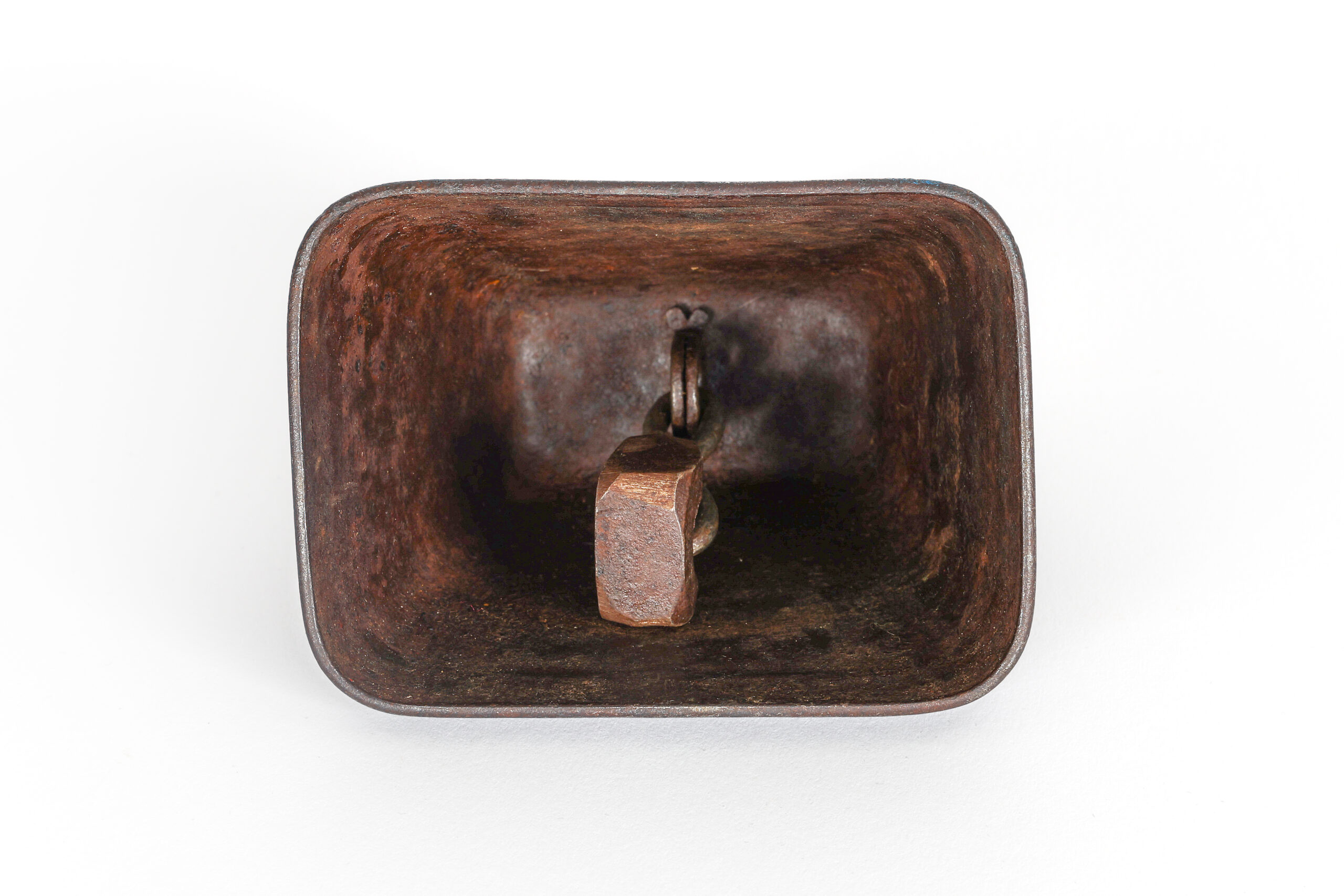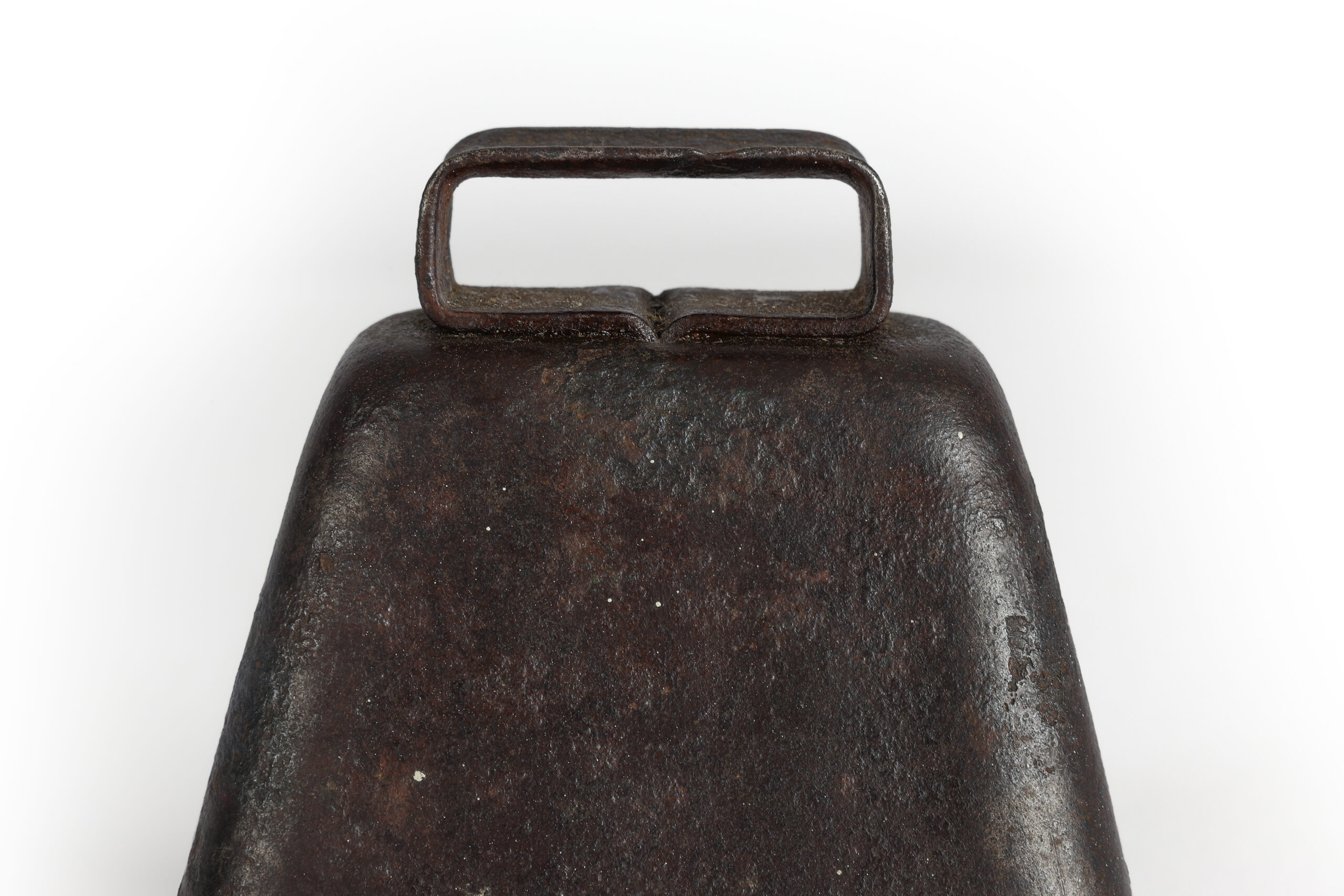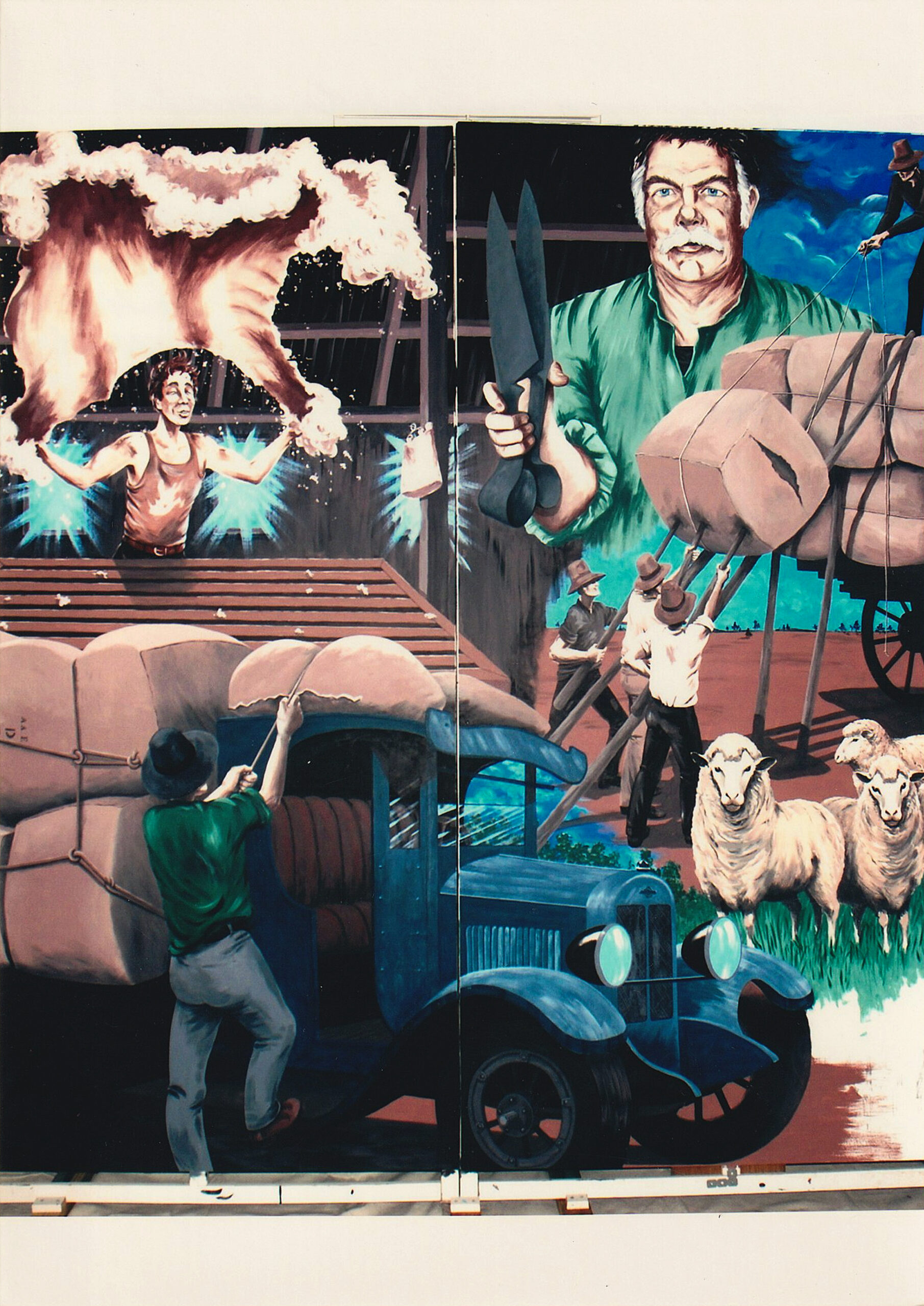Ringing Through Ruin
Bill Cormie Safeguards His Flock
David Cormie arrived in the Pilliga region in the early 1860s to manage a property for the Dangar family. His wife, Charlotte Cussen, came from a family that had settled there in the 1840s. After their marriage, David and Charlotte had seven children; their eldest, William (Bill), who made this bell, was born in 1866.
Beating the Cormie’s by several decades, goats arrived with the First Fleet. While the cows and sheep that survived the journey struggled to acclimatise, goats took to their new surroundings effortlessly. In 1788, the colony’s goat population was 19; by 1794, it had risen to 522. Although 20 new arrivals from Calcutta had swelled their ranks in 1792, it was clear that goats would thrive from the outset.
Fencing in the outback was expensive and difficult to construct on such vast tracts of land, and livestock often wandered off and went feral. Over time, feral goats wreaked environmental havoc, they grazed selectively and trampled soft native grasses, which led to soil compaction. Compaction made it impossible for the rain to soak into the ground, leading to further loss of vegetation.
Adapted to the soft paws of native animals, some grasses never recovered from the hard hooves of the livestock, and their decline contributed to broader changes in the landscape. The Kamillaroi people noted that springs, waterholes, and billabongs had dried up after the settlers arrived; constant trampling by stock blocked the waters from flowing.
Using cattle bells to find roaming stock easily is a practice that has been around since medieval times in Europe. Bill Cormie’s goat bell, which he made during the Great Depression in the 1930s, could have been used to locate strays easily, as well as signalling to desperate hunters that a goat wasn’t feral and had an owner. Whatever his intention, the bell is a relic of a time when our ways and means of communicating were a lot less complicated.


